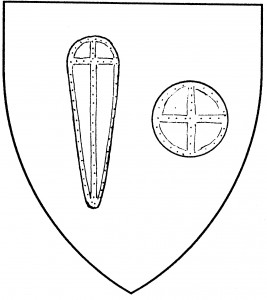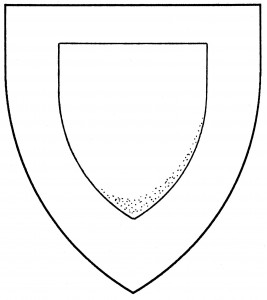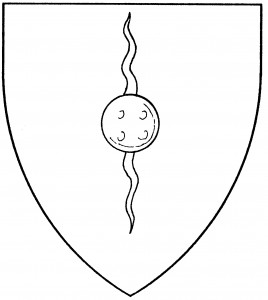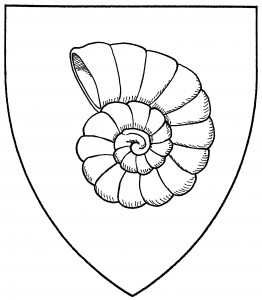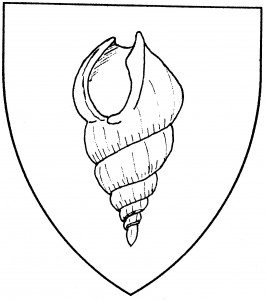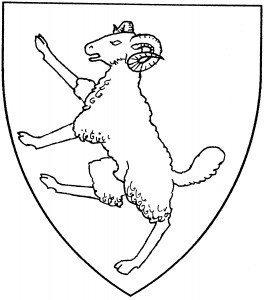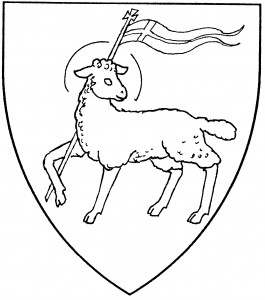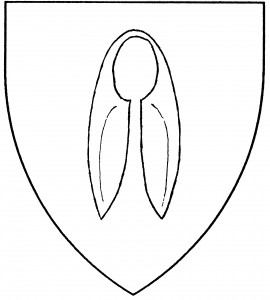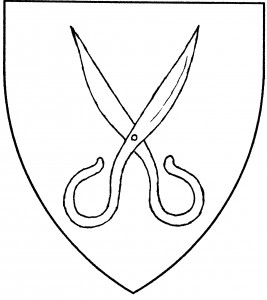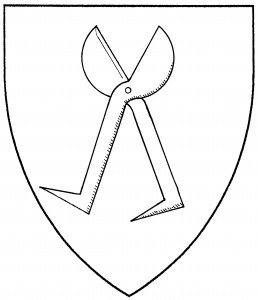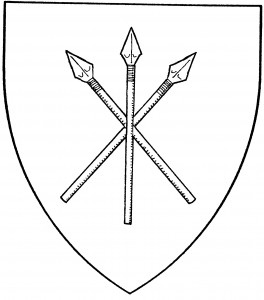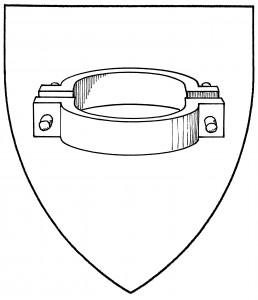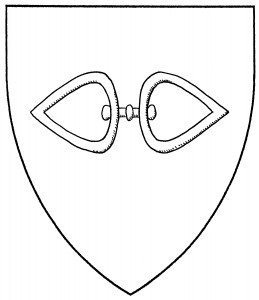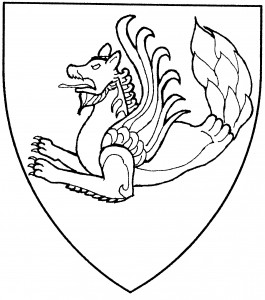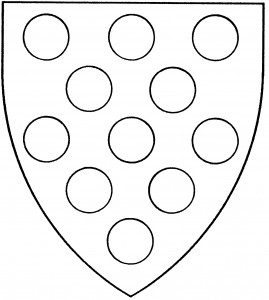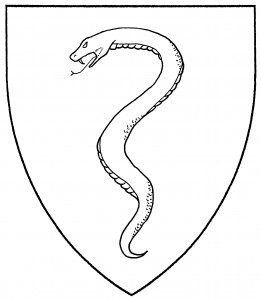
Serpent erect (Period)
The serpent is a cunning reptile, the embodiment of sin to the early Christian fathers. It is also blazoned as a “viper”, or more modernly, simply a “snake”. Its most famous example is in the canting arms (Italian biscia) of Visconti, Dukes of Milan, dating at least to 1413 [Conz.Const. cxlviiº].
The standard heraldic form is of a non-descript venomous serpent, but sometimes an exact species is mentioned: the “adder” and “asp” are specified in mundane armory, while the “cobra”, the “rattlesnake”, and the “natural python” (among others) are found in Society armory. (These latter, not being found in period Europe, carry a step from period practice.) Early depictions of the serpent (still seen in the Visconti arms) give its head a wyvern-like crest.
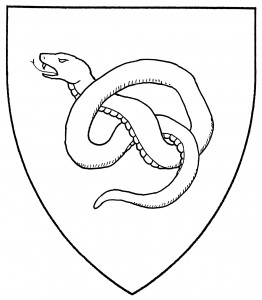
Serpent nowed (Period)
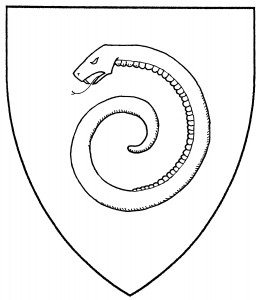
Serpent involved (Period)
In period armory, serpents may be found “erect”, as in the above cited arms of Visconti; “nowed”, or knotted, as in the arms of von Löfitz, 1605 [Siebmacher 156]; and “glissant”, or gliding forward, as in the arms of von Elchingen, c.1450 [Scheibler 93]. When glissant or erect, the serpent’s body is frequently drawn wavy, sometimes exaggeratedly so.
In the Society, we have examples of serpents in annulo, head biting the tail; this posture is variously blazoned as a serpent “in annulo”, “in annulo vorant of its own tail”, or “involved in annulo”. This latter usage, with “involved”, doesn’t match that of period heraldry: there, a serpent involved is coiled in a spiral, head outside and in chief, as in the arms of Throckmorton, d.1570 [Woodcock & Robinson, Heraldry in Historic Houses of Great Britain, p.74; cf. Parker 529]. None of these postures seem to be the default; the serpent’s posture must be explicitly blazoned.
Due to the fame of the Visconti arms, and the fact that its main charge was used to show allegiance to the Ducal House of Visconti, the serpent depicted therein – a serpent glissant palewise, either azure or vert, vorant of a demi-human – is not permitted in Society armory.
For related charges, see eel, man-serpent, naga, Norse beast, pithon, sea-serpent.
Þorfinna gráfeldr bears: Argent, three serpents nowed gules.
Ragnachar Radagaist bears: Vert, a serpent in annulo argent.
Fiora Forte bears: Vert, two serpents erect respectant and entwined, the dexter argent and the sinister Or.
Matheus le Vaus bears: Quarterly argent and azure, a serpent glissant palewise counterchanged.
Lillias Dubh bears: Argent, a serpent involved sable.
